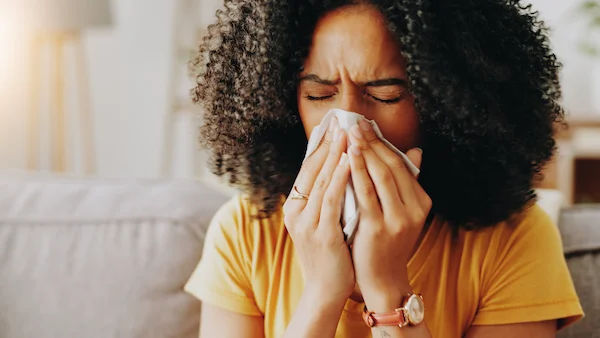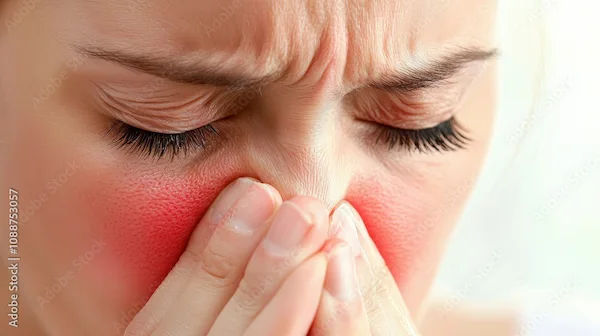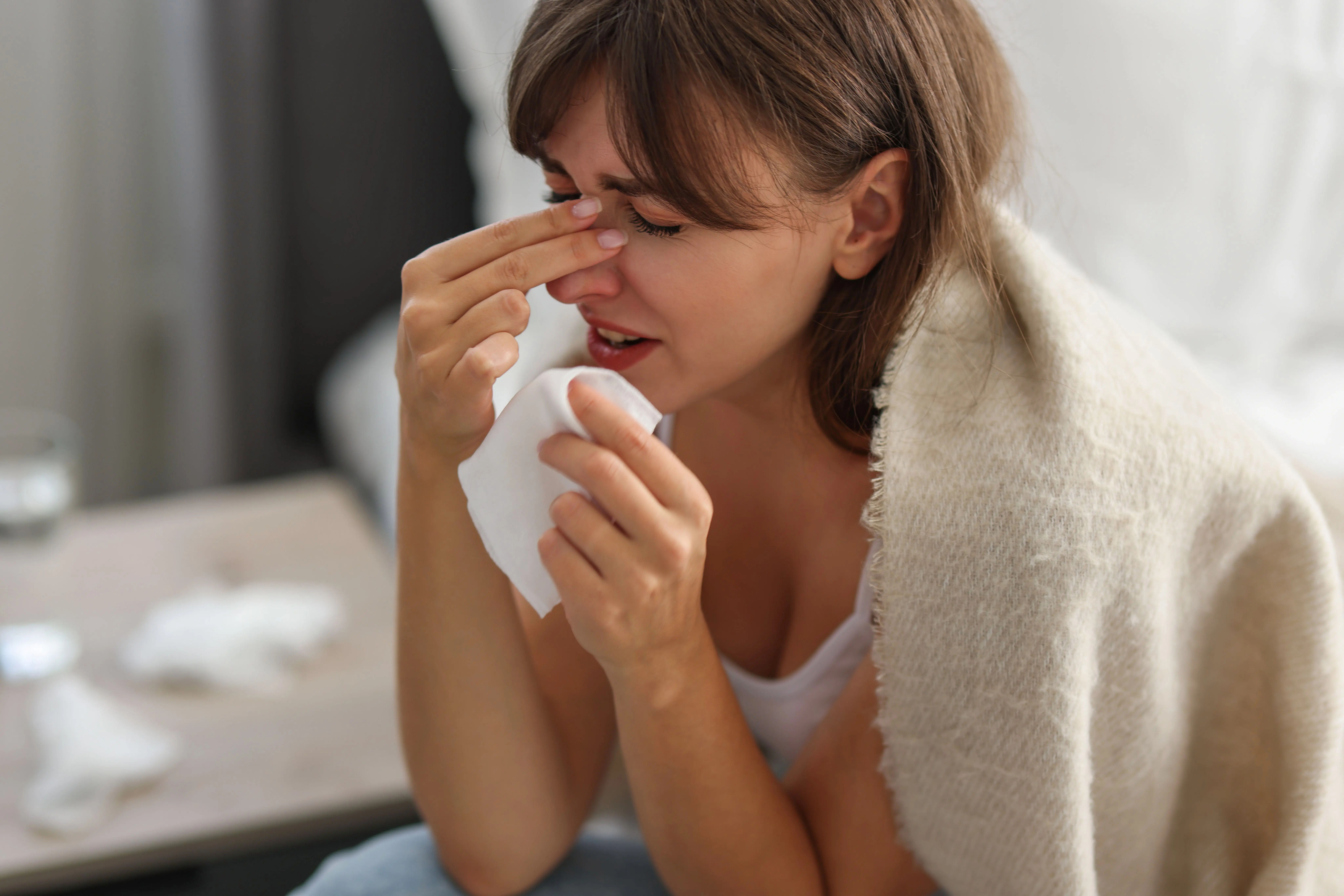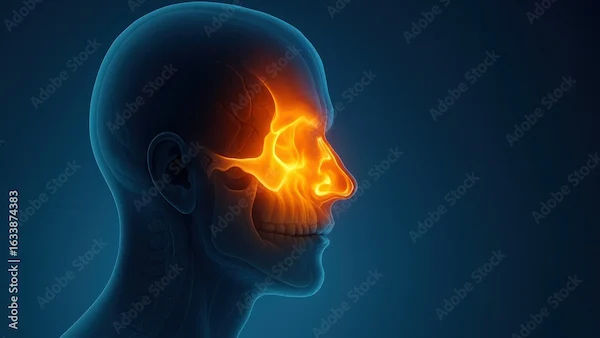Guide to Home Remedies To Relieve Sinus Pain And Pressure
Find fast relief from sinus pain and pressure with our comprehensive guide to effective home remedies. Learn safe, natural ways to clear congestion and breathe easier today.


Introduction
Sinus pain and pressure can make even simple tasks feel exhausting. Whether your congestion stems from a cold, allergies, or a mild sinus infection, the pounding headache, facial tenderness, and stuffy nose often go hand in hand. The good news: targeted home remedies—done correctly and safely—can reduce sinus pain and pressure, help mucus drain, and speed up your return to normal. In this guide, you’ll learn what’s actually happening inside your sinuses, how to relieve pressure fast, and which at-home strategies have the best evidence behind them. We’ll cover essentials like saline rinses, steam, humidifiers, warm compresses, diet tweaks, and smart sleep positioning. You’ll also find advice on allergy-related sinus pressure, safety tips for neti pots, and when to seek medical care. If symptoms persist beyond two weeks, consult a doctor online with Apollo 24|7 for further evaluation. Whether you want immediate relief or a long-term plan to prevent flare-ups, this guide will help you breathe easier and reduce sinus pain and pressure—naturally and safely.
How This Guide Was Built: What Top Sources Say?
We reviewed high-ranking, authoritative pages from medical organizations and clinics on sinusitis and home care. Common threads across top resources include:
- Root causes: viral upper respiratory infections, allergies, irritants, and sometimes bacterial infections.
- Evidence-supported home care: saline nasal irrigation, hydration, humidification, and warm compresses.
- Mixed evidence: steam inhalation provides subjective comfort, though high-quality evidence is limited.
- Antibiotics: generally not needed for uncomplicated acute sinusitis; watchful waiting is often appropriate.
- Red flags and timing: most cases improve in 7–10 days; persistent or severe symptoms warrant medical review.
Consult a Top General Physician
Understanding Sinus Pain and Pressure: What’s Happening?
Your Sinuses 101
Your sinuses are air-filled cavities in your skull (frontal, maxillary, ethmoid, sphenoid) that moisten and filter air. They drain through tiny openings (ostia) into the nasal passages. When these openings swell shut—from a cold, allergies, or irritants—mucus can’t move freely. Trapped mucus creates sinus pressure and pain, often over the cheeks, forehead, between the eyes, and sometimes into the upper teeth.
Why Pressure Builds?
Inflammation causes swelling of the lining and thickens mucus. Combined with blocked ostia, pressure increases. The result: facial tenderness, a feeling of fullness, headache that worsens when bending forward, and nasal congestion. You may also notice decreased smell, postnasal drip, cough, or ear fullness due to connected drainage pathways.
The Nasal Cycle (A Unique Insight)
Your nostrils naturally alternate between congestion and decongestion every few hours—a normal process known as the nasal cycle. When one side feels more blocked, it doesn’t always mean worsening illness. Knowing this can reduce anxiety and help you time interventions (like nasal sprays or saline rinses) to the more open side first, making techniques more comfortable and effective.
Is It Really Your Sinuses? Symptoms, Causes, and When to Worry?
Common Symptoms of Sinus-Related Pressure
- Facial pain and pressure (cheeks/forehead)
- Stuffy or runny nose with thick discharge
- Reduced sense of smell
- Postnasal drip, cough (worse at night)
- Pain that worsens when bending over
- Causes and Triggers
- Viral cold/flu (most common), seasonal allergies, dust and smoke exposure, barometric changes (flying, diving), nasal polyps, and structural issues. True bacterial sinus infections are less common and usually follow a viral illness that doesn’t improve.
When to Seek Help?
See a clinician if symptoms last more than 10 days without improvement, get significantly worse after initial improvement (double sickening), or include severe headache, high fever, swelling around the eyes, stiff neck, or vision changes. If symptoms persist beyond two weeks, consult a doctor online with Apollo 24|7 for further evaluation or book a physical visit with Apollo 24|7 if needed. Antibiotics are not effective for viral sinusitis and are not routinely recommended unless bacterial infection is likely.
Fast Relief You Can Do Right Now
Warm Compress for Facial Comfort
A simple warm compress can ease sinus pain and encourage drainage. Soak a clean cloth in warm (not hot) water, wring, and place it over your cheeks and forehead for 5–10 minutes, 3–4 times daily. Heat helps loosen thick mucus and relax tense muscles around the sinuses, reducing pressure sensations.
Hydrate Strategically
Drink water, diluted broths, or herbal teas throughout the day. Hydration thins mucus, improving flow through sinus openings. Warm liquids may be particularly soothing; classic chicken soup can provide symptom comfort. Limit alcohol (dries nasal lining) and moderate caffeine.
Breathing Easier in Minutes
- Take a steamy shower or create a “bathroom sauna” by running hot water to fill the room with steam while you sit and inhale. While high-certainty evidence is limited, many people report subjective relief and improved comfort. Keep sessions brief (5–10 minutes) and avoid very hot steam to prevent burns.
- Try a gentle nasal breathing exercise: inhale slowly through the nose for 4 seconds, hold for 2, exhale for 6 through the nose. Repeat for 2–3 minutes to calm the nervous system and ease perceived pressure.
OTC Assists (Use Wisely)
Saline sprays can moisten nasal passages. Short-term use of topical decongestant sprays (like oxymetazoline) may shrink swelling for quick relief, but do not use longer than 3 days to prevent rebound congestion. If unsure, consult a clinician. If your condition does not improve after trying these methods, book a physical visit to a doctor with Apollo 24|7.
Saline Nasal Rinses and Neti Pots: The Evidence and How-To?
Why Saline Works?
Saline nasal irrigation flushes out mucus, allergens, and irritants, and can reduce inflammatory mediators on the nasal lining. Studies and reviews suggest saline rinses improve symptom scores and quality of life for many with acute and chronic rhinosinusitis, with a favorable safety profile when done correctly.
Isotonic vs Hypertonic
- Isotonic saline (0.9%) matches your body’s salt concentration and is gentle for daily use.
- Hypertonic saline (e.g., 2–3%) may reduce swelling more effectively for some but can cause temporary burning. Many patients alternate or choose based on comfort.
Step-by-Step Neti Pot or Squeeze Bottle
1) Wash hands. Mix sterile or distilled water with premixed saline packets, or use boiled-and-cooled water (boil for 1 minute; at high altitudes per local guidance). Never use tap water directly to avoid rare but serious infections.
2) Lean over a sink, head tilted ~45°; gently pour saline into the upper nostril and let it flow out the lower nostril.
3) Breathe through your mouth; do not swallow.
4) Switch sides.
5) Gently blow your nose afterward.
6) Clean and air-dry the device daily.
Frequency and Safety
Start once daily during flare-ups; adjust to comfort (up to twice daily). Many use 3–4 times a week for maintenance in allergy seasons. Stop and consult a clinician if you experience ear pain, nosebleeds, or worsening symptoms. If recurrent issues persist, consult a doctor online with Apollo 24|7.
Steam, Humidifiers, and Air Quality: Breathing Easier at Home
Steam Inhalation: Comfort With Caution
Steam provides moisture and warmth that many find soothing, helping reduce the sensation of sinus pressure. However, evidence for cure is limited, and burns are a risk if the steam is too hot or the water spills. Keep steam sessions short, comfortable, and safe.
Humidifiers and Room Moisture
- Aim for indoor humidity of 40–50%. Too dry can irritate the nasal lining; too humid can promote mold growth. Use a clean, cool-mist humidifier, and disinfect it regularly to prevent microbial growth. Consider a hygrometer to track humidity.
- Unique tip: Houseplants can slightly increase room humidity, but monitor for mold sensitivity if you have allergies.
Clear the Air: Irritant Control
Smoke, strong fragrances, cleaning fumes, and dust worsen inflammation. Improve ventilation, use exhaust fans during cooking and showers, and consider a HEPA air purifier if you have indoor allergens. Regularly wash bedding in hot water and vacuum with a HEPA-filter vacuum for dust and pet dander control.
Diet, Hydration, and Natural Decongestants
Foods and Fluids That Help
- Warm broths, soups, and decaffeinated teas can soothe and hydrate. Some people find spicy foods (capsaicin in chili) transiently open nasal passages by stimulating nerve receptors; effects are short-lived but can offer quick comfort.
- Long-tail to use: foods that reduce sinus inflammation; natural decongestants for sinusitis.
Anti-Inflammatory Eating Pattern
An overall anti-inflammatory approach—plenty of fruits, vegetables, omega-3 rich foods (e.g., fish, flax), and fewer ultra-processed foods—may support immune health and reduce chronic inflammation that contributes to recurrent sinus discomfort. Stay consistent during allergy or cold seasons.
What to Limit?
Alcohol dehydrates and can worsen nasal swelling (especially red wine in those sensitive to histamines). Highly salty foods may aggravate swelling in some people. Moderating caffeine can help maintain hydration.
Supplements and Herbal Options (Use Judiciously)
Honey in hot water or tea may soothe throat irritation from postnasal drip (not for children under 1 year). Menthol or eucalyptus rubs can offer a cooling sensation that improves nasal airflow perception; avoid placing them inside the nostrils. Before using herbal products (e.g., bromelain, quercetin), talk with a clinician about safety and interactions.
Gentle Techniques: Warm Compress, Massage, and Sleep Position
Sinus Massage and Myofascial Release
Lightly massaging along the brow line, between the eyes, and over the cheekbones can reduce muscle tension around congested sinuses. Use gentle circular motions for 1–2 minutes per area. Add a warm compress first to soften tissues. While clinical trials are limited, many people report symptom relief.
Sleep Smarter for Drainage
- Elevate the head of your bed 10–15 cm (4–6 inches) or use an extra pillow so gravity helps mucus drain and reduces nighttime sinus pressure and cough. Sleeping on your side with the most congested nostril “up” can sometimes help drainage from the lower side.
- Unique tip: Because of the nasal cycle, switch sides if you wake congested on one side.
Breathing and Posture
Gentle nasal breathing exercises and short walks improve airflow and ciliary movement in the nose. Avoid strenuous exercise during severe congestion, but light activity can help circulation and comfort.
Allergies and Recurrent Sinus Pressure: Prevention and Next Steps
Identify Triggers
Pollen, dust mites, pet dander, and molds commonly cause allergy-driven inflammation that leads to sinus swelling and pressure. Keep an allergy diary to link flare-ups with exposures. Rinsing your nose with saline after outdoor exposure can help remove allergens.
At-Home Allergy Controls
Use allergen-proof mattress and pillow covers, wash bedding weekly in hot water, keep pets out of bedrooms, and shower after spending time outdoors during high-pollen days. HEPA filtration and dehumidification (in damp climates) may help.
Preventive Routines
During allergy seasons, consider regular isotonic saline rinses, and discuss daily intranasal corticosteroids or oral antihistamines with a clinician if appropriate [5]. If symptoms are frequent, explore allergy testing and management. Apollo 24|7 offers a convenient home collection for common allergy blood tests (such as total and specific IgE), which can guide personalized prevention.
When Symptoms Keep Coming Back?
Recurrent or chronic symptoms (lasting 12 weeks or more) may indicate chronic rhinosinusitis, nasal polyps, or structural issues. A clinician may recommend additional therapies or imaging. If recurrent sinus pain and pressure interfere with daily life, consult a doctor online with Apollo 24|7 to discuss next steps.
When Home Remedies Aren’t Enough? Red Flags and Medical Care
Red Flags
High fever, facial swelling, severe headache, stiff neck, vision changes, confusion, or symptoms that worsen after initial improvement. These need prompt medical evaluation.
Timing Your Next Step
Many acute cases improve within 7–10 days. If symptoms persist beyond two weeks or severely affect your sleep or work despite home care, consult a doctor online with Apollo 24|7 for further evaluation. Antibiotics may be considered if a bacterial sinus infection is likely (persistent, severe, or “double-worsening” pattern).
What a Clinician Might Recommend?
Intranasal corticosteroids, antihistamines for allergic components, short courses of decongestants, or antibiotics when indicated. In chronic cases, imaging or referral to an ENT may be appropriate. If your clinician suspects uncontrolled allergies, Apollo 24|7 can arrange convenient home collections for relevant blood tests to personalize your plan.
Conclusion
Sinus pain and pressure can derail your day, but a well-chosen mix of home remedies—saline rinses, warm compresses, safe steam, hydration, and cleaner indoor air—often provides meaningful relief. Saline irrigation stands out for evidence-backed benefits when performed safely, while humidity control and irritant reduction support your nasal lining’s natural defenses. Layer in simple tactics like gentle massage and head-of-bed elevation to encourage drainage, and consider anti-inflammatory eating and routine saline rinses during allergy seasons. If your symptoms persist past two weeks, worsen after initially improving, or come with red flags like high fever, swelling, or vision changes, it’s time to seek medical guidance. Consult a doctor online with Apollo 24|7 to discuss next steps and whether targeted treatments—or testing for allergic triggers—could help. With a tailored plan that combines smart self-care and timely medical support, you can reduce sinus pressure, ease pain, and breathe easier every day.
Consult a Top General Physician
Consult a Top General Physician

Dr. Rajib Ghose
General Physician/ Internal Medicine Specialist
25 Years • MBBS
East Midnapore
VIVEKANANDA SEBA SADAN, East Midnapore

Dr Bhumika Lalwani
General Surgeon
4 Years • MBBS MS
Bengaluru
PRESTIGE SHANTHINIKETAN - SOCIETY CLINIC, Bengaluru
Dr. Naziya Rahim Bhatia
General Surgeon
7 Years • MBBS ,MS
Bengaluru
Apollo Clinic, Sarjapur Road, Bengaluru

Dr. Soumen Paul
General Physician/ Internal Medicine Specialist
24 Years • MBBS
Kolkata
MCR SUPER SPECIALITY POLY CLINIC & PATHOLOGY, Kolkata
(25+ Patients)

Dr. Sougata Kumar
General Practitioner
8 Years • MBBS
East Midnapore
VIVEKANANDA SEBA SADAN, East Midnapore
Consult a Top General Physician

Dr. Rajib Ghose
General Physician/ Internal Medicine Specialist
25 Years • MBBS
East Midnapore
VIVEKANANDA SEBA SADAN, East Midnapore

Dr Bhumika Lalwani
General Surgeon
4 Years • MBBS MS
Bengaluru
PRESTIGE SHANTHINIKETAN - SOCIETY CLINIC, Bengaluru
Dr. Naziya Rahim Bhatia
General Surgeon
7 Years • MBBS ,MS
Bengaluru
Apollo Clinic, Sarjapur Road, Bengaluru

Dr. Soumen Paul
General Physician/ Internal Medicine Specialist
24 Years • MBBS
Kolkata
MCR SUPER SPECIALITY POLY CLINIC & PATHOLOGY, Kolkata
(25+ Patients)

Dr. Sougata Kumar
General Practitioner
8 Years • MBBS
East Midnapore
VIVEKANANDA SEBA SADAN, East Midnapore
More articles from Sinusitis
Frequently Asked Questions
What relieves sinus pressure instantly at home?
A warm compress over your cheeks and forehead, followed by a gentle saline spray or rinse, often gives quick comfort. Sipping warm fluids and taking a brief steamy shower can also ease sinus pain and pressure fast.
Is it safe to use a neti pot every day?
Many people use isotonic saline rinses daily during flare-ups and several times weekly for maintenance. Always use distilled or previously boiled-cooled water and clean the device after each use to keep it safe. If you experience ear pain or persistent nosebleeds, stop and consult a clinician.
Can sinus pressure cause tooth pain?
Yes. The upper teeth sit near the maxillary sinuses, so inflammation and pressure can refer pain to those teeth. If tooth pain persists or worsens, see a dentist or clinician to rule out dental causes.
How long should sinus pressure last?
Most cases related to viral infections improve within 7–10 days. Persistent symptoms beyond two weeks or “double-worsening” may suggest bacterial infection or another issue—consult a doctor online with Apollo 24|7 if symptoms don’t improve.
What helps sinus pressure at night?
Elevate your head, run a clean cool-mist humidifier (40–50% humidity), rinse with saline before bed, and sleep on your side with the most congested nostril “up.” These steps can reduce nighttime sinus pressure and improve rest.




